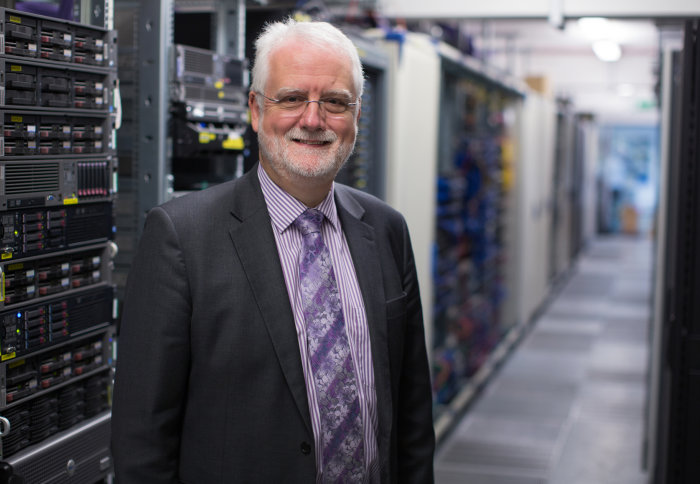

Professor Chris Hankin reflects on nearly 10 years leading security research and engagement at Imperial College London.
Back in 1999 Professor Chris Hankin published his first academic paper in cyber security, having already established a career in other aspects of computing research. He later became an international authority on the subject and was appointed the second Director of the Institute for Security Science and Technology (ISST).
Before taking the helm at the ISST however, he first spent several years in senior roles at Imperial, including Prorector of Research and Deputy Principle (Vice Dean) of the Faculty of Engineering.
It was roughly 10 years after that first 1999 cyber security paper, in 2009, that he started to engage with security research more deeply through the then newly formed ISST.
Now after nearly 10 years leading the ISST Professor Hankin is stepping down as Co-Director. He will maintain active on several of the large research programmes such as RITICS and KIOS, and will continue to work closely with the ISST for some time.
Here, in his own words, Professor Hankin reflects on his academic journey over this period.
The academic year of 2008/2009 was something of a watershed for me; it was the last time that I had sabbatical leave. I had just stepped down as Deputy Principal of the Faculty of Engineering (Vice Dean in today’s currency) and I was preparing myself for return to the Department of Computing as a full-time academic. I was aware that Sir Keith O’Nions, followed by Andrew Burton, had joined the College to establish a new Institute and, since my research had moved towards cyber security, I enthusiastically engaged with the new enterprise. Keith and Andrew encouraged me to attend my first EPSRC sandpit, about Detecting Acts of Terrorism, and that led to me becoming Principal Investigator of the Making Sense project. Making Sense was a multi-disciplinary project using visual analytics to support analysts in investigating acts of terrorism, and I led a team from nine universities.
Up until that point, my research had focussed on an area known as “Language-based Security”. This involved the analysis of computer programs to understand the way in which they processed data. The work built on my expertise in static programme analysis. Language-based security aimed to ensure that “secret” information was not leaked to the outside world. Making Sense opened a new area of work for me; at Imperial we concentrated on the analysis of data and, surprisingly, some of the analysis techniques were not so different from my earlier work.
Soon after I finished my sabbatical, Sir Keith was elevated to the position of Rector and invited me to take over as Director of ISST, which I did in January 2010. The last eight years have been an exciting mix of policy work, building research programmes in ISST and supporting security researchers across the College. The two main research programmes to date have been in cyber security and data analytics. ISST holds the GCHQ Academic Centre of Excellence in Cyber Security Research (ACE-CSR) status for the College, has led our involvement in the Research Hub for security, privacy and trust in the Internet-of-Things (PETRAS) and has been involved in two of the national cyber security research institutes, leading one of them (RITICS). The data analytics programme has conducted a variety of projects for UK and overseas governments and has recently specialised in social media analytics. The policy work has contributed to important publications across a number of UK Government Departments.
At this point in the Institute’s history, there are a number of exciting new opportunities on the horizon for the ISST. The two that are likely to have the most impact are the Defence and Security developments at the White City campus, where a cluster of large companies are co-locating with innovate SME’s and government, and our recent launch of education programmes at the Masters level. We are also beginning to collaborate much more actively with the other Imperial College Institutes, particularly with medical colleagues, and I’m sure this will continue to develop over the coming months and years.
Unfortunately, the world is no more secure now than it was 10 years ago – in fact, it could be argued that political instability and the effects of climate change and other factors are making it less secure. The security threat may change but the Imperial academic community is well-placed to contribute to solutions to whatever problems may arise in future. I expect the next ten years to be an even more successful period for ISST.
Article text (excluding photos or graphics) © Imperial College London.
Photos and graphics subject to third party copyright used with permission or © Imperial College London.
Reporter
Max Swinscow-Hall
Institute for Security Science & Technology



